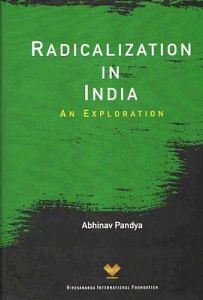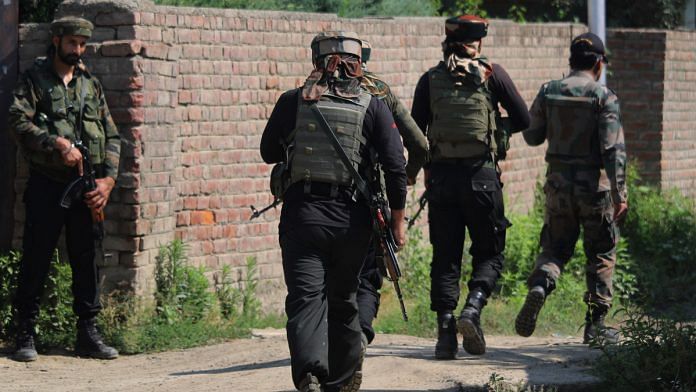In the current scenario, the most severe threat concerning radicalization leading to terrorism, comes from Jamaat-i-Islami. As said by Mr Shiv Murari Sahay, the veteran counter-terrorism official of J&K (Pultizer Project, November 5, 2012),” JI is a South Asian version of the Muslim Brotherhood of Egypt”. Keeping in mind, the considerations of space, it may not be possible to delve deeper into the factual details of the origins of JI. However, suffice it to say that JI believes in political Islam.
Jamaat-i-Islami follows the teachings of Maulana Maududi, Syed Qutb, and Hasan Al Banna- the society and politics should be conducted in line with the divine law of Sharia. It is an extremist organization that dehumanizes non-Muslims, Shias, and Sufi Muslims. In social domains, it is conservative, fundamentalist, exclusivist and orthodox. Though like Etqadis or Barelwis, they follow the Hanafi school of thought, they do not believe in Shrine worship and see many syncretic Sufi practices as blasphemy; the impurities borrowed from the Hindu idolatry. They agree with Ahle-Hadith in their rejection of shrine worship, and attitude towards the Shia and Ahmadiya Muslims and non-Muslims.
In the political domain, Jamaat-i-Islami supports Pakistan’s claim on Kashmir. It is member of and ideologically aligned with the separatist Hurriyat Conference (APHC). JI’s de facto militant face is Hizbul Mujahiddin (HM). Its agenda is pro-Pakistan and it openly talks about that in its Ijtemas (religious-political discussions). Informed interlocutors during the interviews maintained that from 2002 through 2008, the peace period in Kashmir, Jammat-i-Islami strongly entrenched itself in the Kashmiri society through proselytization, social service, ijtemas (religious gatherings), threats, terror, and intimidation. The result of their heightened efforts was seen in the unrest that erupted in 2008, and continuing since then.
Also read: Kashmir militancy will be driven by IS ideology, says terror expert Rohan Gunaratna
According to informed sources, JI is said to have played an instrumental role fomenting the fires of 2016 post-Burhan Wani agitation. Today, in most of the social and political circles of Kashmir, it is firmly believed that not a single targeted and political killing happens in Kashmir without JI’s approval. JI has strong presence in education and the social service sectors. Hundreds of schools run by the Falai-Aam (FA) trust of JI are better than the government schools in infrastructure and the quality of teaching. These JI schools combine modern scientific education and Islamic teachings.
Local newspaper, “Greater Kashmir” reported that the Trust has helped spread education over the last 30-40 years to areas that had remained even beyond the reach of the government. (Greater Kashmir, “Falai Aam Trust-Providing Education for All”, December 3, 2015). Incidentally, government-run schools are viewed poorly by the local people. There aren’t enough non-religious private schools. In such a scenario where the state, private sector, and the secular non-profit sector do not have a strong presence in the field of school education, JI and Ahle-Hadith have intervened effectively, earning social legitimacy. JI also did impressive rehabilitation work during the disastrous floods of 2014.
JI generously distributes Islamic literature in the form of books, pamphlets, and brochures in colleges, universities, jails and social circles. The original Arabic literature is translated into Urdu and English in Pakistan and sent to India. Tons of literature on political Islam is available in all the bookshops in Srinagar. These include books of Maulana Maududi, Syed Qutb, and Hasan Banna which are readily available in all bookshops. These are available in English and the quality of printed versions is excellent. At first glance, one gets the impression that they are political science or IR books. The objective appears to be to motivate the youth and capture their intellectual imagination in the early impressionable years.
These books are widely read in universities and colleges. Prof. Muhammad Rafiq Butt, professor of Sociology in Kashmir University (native of Ganderbal) who joined HM and was killed in police encounter only three days after leaving home, was an avid reader of Maududi literature. According to the police officials who closely observed his case, he was blending political Islam with sociology in his classroom lectures. According to informed interlocutors, Jammat acts as a conduit for militancy.
Jamaat-i-Islami functions as a socio-political wing of HM and its cadres function as OGWs (Over Ground Workers) of HM in providing infrastructure/logistic support, organizing protective shell in which militants operate. JI has substantial penetration even in the state’s lower and middle-level civil administration, civil secretariat, colleges and universities, jails, legal fraternity, powerful financial institutions, political groups, and the police department. Allegedly, they also help in arranging logistics, weapons, and shelter for the Foreign Terrorists and in facilitating their movements. One can clearly see the evidence of extended JI presence on the ground.
Also read: How militants in Kashmir have fallen in their own trap after Modi govt’s security clampdown
According to a former LeT militant whose religious radicalization started after association with Islamic Jamiyat-ul-Talba, student wing of JI, Jamaati association facilitates easy entry into militancy. The cadres, in the beginning, are asked to perform their religious duties. Later, if someone expresses a strong inclination for joining a militant group, he is asked to resign from JI at least a year before his formal induction into the militant wing i.e. HM. This is done to feign innocence later with a justification that as soon as JI spotted radicalization tendencies, it expelled the concerned individual.
Getting formal membership of JI is rather tough. It begins with participation in Ijtemas, followed by an active association with its youth wing and after attaining the age of 40, one can apply for the basic membership. In a district of 500 villages, on an average, there could only be about 400 active membership of JI. They have a very dedicated cadre and strong grassroots presence.
Their modus-operandi involves the use of persuasion, threat, violence, and intimidation. People in the rural areas are scared of cooperating with the state and armed forces for fear of JI to the extent that they would not even like to be seen publicly with high-ranking government officials. They fear that JI OGWs also act as intelligence arm of militant organizations reporting the movements of ordinary rural and urban folk. The informers of security forces and others who want to collaborate in development work with the government are dealt with threats and violence.
Further, JI has expertise in psychological harassment and pressuring the opponents. For example, they keep intelligence of those citizens who vote during elections. After that, they indulge in intense character assassination of such individuals.
Further, according to informed sources, Jama’at and HM have been sending boys to POK since 2012 for the required training. Moreover, 2014 onwards, Jama’at has strengthened itself at the ground level in South Kashmir, and PDP that has a strong electoral base in South Kashmir, is widely known to have turned a blind eye for obvious reasons. Moreover, the result can be seen in the current phase of bloody militancy in South Kashmir. It may be emphasized that, more than any other Tanzeem, the JI symbolizes strongly entrenched Pakistani footprint in Kashmir. It is the gravest threat to India’s national security.
Also read: How this General saw Kashmir 50 yrs ago – No signs of fundamentalism, Army had people’s trust
However, these days, it appears that the young generation has become a little disillusioned with Jamaat-i-Islami. The reasons are their threats and terror tactics. They are seen as fulfilling the agenda of foreign players and less concerned with the grievances of Kashmiris. Their malicious political machinations and complete disregard of Kashmiriyat further infuriate the local Kashmiris. The young generation also sees JI as a corrupt organization.
Within JI, ideological differences have existed since 2001. The moderate and the intellectual section favour a more non-violent political action and therefore want JI to distance itself from HM. The remaining radicalized and hardcore Pakistan supporters seem to have captured the organization.
The youth finds JI archaic and orthodox. Ahle-hadith which has better financial resources, now attracts the younger generation, with profound linkages with global Islam. It projects itself intellectually and logically. It engages in prolific use of the modern communication technologies and internet which is instrumental in luring young impressionable minds.
Lately, Jamaat has increased its operations in Central Kashmir. This can be seen in the form of weekly invitations being sent to individuals in rural areas inviting them to participate in Ijtemas. Recently, the leadership has also been charged with a mandate to go on a high recruitment drive. Over the last few months (2018-April Onwards), JI-administered WhatsApp groups are being created in large numbers. It appears that some dominant long-term strategy is being designed to capture the current youth unrest.
 This excerpt from Radicalization in India: An Exploration by Abhinav Pandya has been published with permission from Pentagon LLP.
This excerpt from Radicalization in India: An Exploration by Abhinav Pandya has been published with permission from Pentagon LLP.







Good read. Thanks.
India should follow Xinjiang policy of Chinese to weed out terrorism. Re-education of people is the only answer to terrorism.
Re-education has never worked historically. In fact, the origin of the Muslim Brotherhood was from attempts to break people through torture and re-education. And let’s not take pointers from China on how to integrate a country. India’s political system won’t allow for it anyway.
Upward mobility is the only long term strategy that works to ameliorate those at risk of being disenfranchised. That and a better narrative countering glorification through violence.